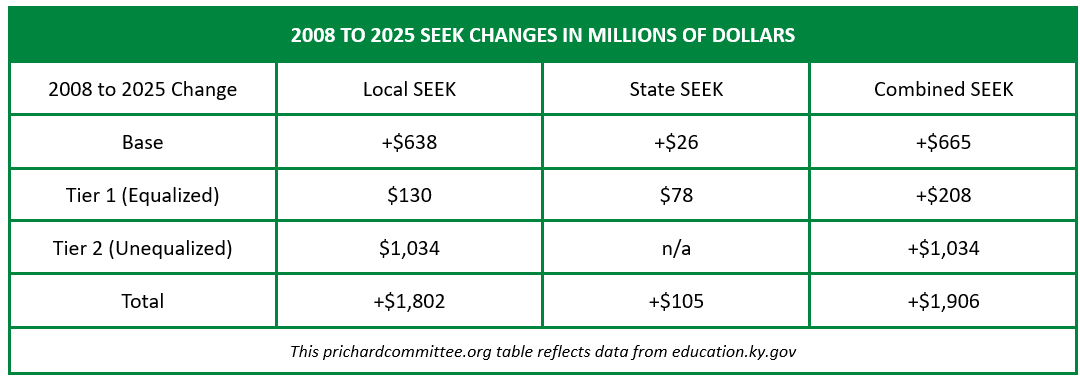As the dust settles on the 2024 Kentucky legislative session, there is a significant measure of good progress on the early childhood front, some sobering data that gives us pause, and some critical unknowns.
First, the good news – millions of dollars have been earmarked for early care and education in Kentucky for the FY 2025 and FY 2026 biennium.
State Funding for Early Childhood
The General Assembly has appropriated $112.45 million for the Child Care Assistance Program (CCAP), the Employee Child Care Assistance Program (ECCAP) and early childhood scholarships, a substantial increase from the $21.2 million in the previous biennium.

The state budget also included $45.11 million in Kentucky tobacco settlement dollars for the Early Childhood Advisory Council and regional collaboratives, home visitation, and maternal and child health services.

In December 2023, the Cabinet for Health and Family Services (CHFS) announced the disbursement of an additional $50 million in sustainability funding to child care providers to support operational needs, such as employee pay raises and facility updates.
Federal Funds for Early Childhood
The $27.25 million in federal funds consists of $14.4 million in additional FY 2024 Child Care Development Block Grant (CCDBG) dollars appropriated by the federal government in March 2024, and $13.35 million in what we believe to be existing federal funds that the state General Assembly has directed the executive branch to allocate towards CCAP initiatives in the just-enacted state budget.

Granted, the early childhood sector was buoyed by the infusion of unprecedented federal pandemic era funding the last few years, which gave us a glimpse into what a thriving early care and education ecosystem in Kentucky might look like when appropriately resourced. However, this shot in the already limp arms of the early care and education sector proved to be a double-edged sword, because it also put on the back burner the sense of urgency for state action that the pre-pandemic child care crisis warranted.
Realities and Critical Unknowns
While we applaud the historic state investment in the early care and education sector, there are some sobering realities we must also acknowledge. The state budget does not provide for the maintenance of services to families at 85% of the state median income (SMI), which can potentially disenfranchise 16,000 children from child care services when eligibility reverts to 160% of the federal poverty level (FPL). The federal Administration for Families and Children’s Office of Child Care now requires states to limit the copayment of families to no more than 7% of their household income and to reimburse child care providers based on enrollment versus attendance. It is yet unclear what proportion of the cost of implementing these new rules would be covered by the additional $14.4 million in CCDBG funds that Kentucky is receiving.
The additional $50 million in emergency funding for CCAP that the Cabinet for Health and Family Services provided in December 2023 is set to be exhausted by September 2024. Already, parents and child care providers have had to make gut-wrenching choices. For providers, tuition hikes, walking back much needed pay raises for early childhood employees, and closing classrooms or an entire early childhood center or family child care home have already become reality. For child care employees, the desire to stay in this line of work and invest in young children is eclipsed by the basic need to provide for their own families by moving to higher paying jobs. At the heart of this conundrum are the working families with young children who must face the prospect of pulling their children out of safe and nurturing child care settings, and then either quitting work or school to stay home, or leaving their children in situations they are not comfortable with because they need the health insurance. None of these choices are beneficial to families and our local and state economies.
It is imperative that we arrive at a clear picture of the fiscal realities facing the early care and education sector over the next two years. We need to be able to brace our communities for the potential impact of diminished access to safe, affordable early care and education on our workforce, business and industry, and our overall economy. And we need to continue to advocate for our families and the child care providers who have subsidized through their meager compensation and profit margins the vital service of caring for our youngest learners.












